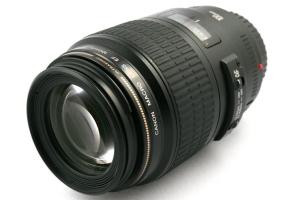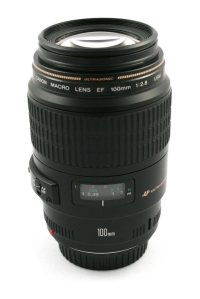The key to great photographs is a good lens, right?
We often hear the claim that camera lenses, and not the camera, are the secret behind taking great photos. Clearly the camera body plays a role, but it’s true – the lens does have a critical role in the making of a high-quality photo. How do you choose camera lenses? What’s a better choice – buying lenses made by the maker of your camera, or buying lenses that fit your camera but are made by a specialty lens brand? 
Should you buy a lens and a camera made by the same brand?
It’s accepted that a camera manufacturer knows best how to make camera lenses to fit its line of cameras. This may be true, but those lenses will almost always be more expensive than a camera lenses made by a lens manufacturer. Take Nikon and Canon for example. Sigma and Tamron make lenses that are just as good as the lenses made by Canon or Nikon (according to many photography magazines) and are priced much lower. In some cases, those lenses come in a zoom range unavailable in lenses made by the original camera manufacturer, such as 18-200, making switching from a wide-angle to a telephoto lens practically unnecessary.
Pay attention to the f-stops
The f-stops in camera lenses determine how much light gets inside the camera. If the aperture is wide open (indicated by a small f-number), lots of light will get inside and you will be able to take good quality photos even in dark conditions. A number that indicates the maximum aperture the lens offers (the minimum f-number) should be indicated next to the optical lens (this determines the maximum amount of light the can be let in). A smaller f-number indicates a larger amount of light (and a pricier lens). Pay attention to this f-number when comparing camera lenses, so you can have more flexibility when shooting in dark conditions.
Nowadays, many zoom lenses have two f-numbers: this shows you the range of f-stops possible. The low number tells you the maximum aperture in wide-angle and the large number tells you the maximum aperture when you’re zoomed in. You can learn more about zoom camera lenses in this article, or learn more about f-stops here.
Image stabilization camera lenses can make your pictures better
 Most companies offer camera lenses with image stabilization technologies. Each company has its own proprietary system, but the principle remains the same.
Most companies offer camera lenses with image stabilization technologies. Each company has its own proprietary system, but the principle remains the same. The same technology that lets military tanks aim their guns while on the move helps photographers take pictures while moving or stabilize a picture taken without a tripod. If you are inadvertently tilting the camera when pressing the shutter release button the image stabilization mechanism will compensate for that resulting in a straighter, sharper photo. Though more expensive, image stabilization is very handy in long zoom lenses, which are more susceptible to blurring. You will be able to take clearer shots of far away objects with relatively long exposure.
The rule of thumb is that the shutter speed you need to use is calculated by one over the focal length, e.g. a 60 millimeter focal length requires a 1/60 speed and a 200 millimeter focal length requires a 1/200 speed. An image stabilization mechanism increases the range of speeds you can use by a factor of 2 to 3 without causing blur. In other words, you’ll be able to set the camera to 1/30 if you chose a focal length of 60 millimeters.
Check whether the lens comes with an internal focusing motor
An internal focusing motor enables the camera to focus quicker. If your lens doesn’t have an internal focusing motor it might be able to use the camera’s focusing motor. Otherwise, you’ll have no choice but to focus manually by turning the rings of the lens. An internal focusing motor does make the price of camera lenses higher, but it’s quickly becoming the standard in most camera lenses because of the speed and convenience it provides.
Buy a UV filter and protect your lens from scratches
Since a scratch on a camera lens will ruin every single picture you take, we highly recommend buying a clear UV filter for your camera lenses to protect them from scratches. If anything happens, only the filter will get scratched and only the filter will have to be replaced. Filters come in all shapes and sizes and there’s no guarantee you’ll be able to swap filters between cameras that you already own.
Read more about filters.
Put the lens cap on and keep the dirt away
Don’t be lazy - put the lens cap on whenever you’re not shooting. The cap protects the lens (or the filter, if you have one) from scratches and crud that may show up in the pictures you take. You can buy an elastic for a few bucks that connects the cap to the lens and saves you the worry of losing the cap when you’re shooting.
Cleaning camera lenses
You can find a cleaning kit that costs a few dollars in any photography store. Cleaning the lens should be done with rice paper or a micro-fiber cloth. Use circular motions from the center outwards, but make sure you use a brush first to get rid of the larger particles that might scratch the lens in the cleaning process.
To take it a step further you can get rid of the particles by blowing some air on the lens using a special canister. If you don’t want to carry a complete cleaning kit you can buy a take-anywhere cleaning stylus that has a brush on one side and piece of cloth on the other.
Types of camera lenses
The main feature by which people choose camera lenses is the focal length. The focal length determines the field you will be able to capture in a shot. A wide-angle camera lens is a lens that captures a large field, but doesn’t zoom in much, whereas a zoom lens captures a smaller field but can zoom in.

A A wide-angle lens is considered better for scenic shots, but may cause the fisheye effect when shooting a close up portrait.
Wide-angle lenses
You can find wide-angle lenses with an exceptionally small focal length of 10-20 millimeters. These lenses can capture a very large field of vision – even larger than what the human eye can see – and are good for scenic shots and portraits.
Zoom lenses – telephoto lenses
These lenses let you zoom in on your object and take pictures from a great distance thanks to the focal length range they come in, for example 70-300 and 55-200. They are great for wildlife photography and sports photography. A wide angle is more useful for daily use, so most people buy a telephoto lens as a complement, secondary to their wide-angle lens.
Wide-angle zoom lenses
A wide-angle zoom lens is a hybrid solution that combines a wide-angle and telephoto lens. The common focal length ranges are 18-200, 18-300, and so on. The biggest advantage these lenses offer is the speed and convenience of choosing the appropriate zoom for a photo. Some claim, however, that owning two lenses – 18-55 and 55-300 – will result in better pictures over owning one 18-300 lens.
A fisheye lens
A fisheye lens has a very small focal length and causes a distortion of the photographed field. It’s mostly used in artistic applications.
A macro lens
A macro lens is used to shoot very small objects, such as flowers, insects, etc. Just like regular lenses, the macro lens has a range of focal lengths, but it provides especially high quality focusing on small objects. You can find short macro lenses that shoot from up close, or long macro lenses that let you shoot from further away. Macro lenses are relatively pricey and most people choose to use a ‘regular’ zoom lens instead.